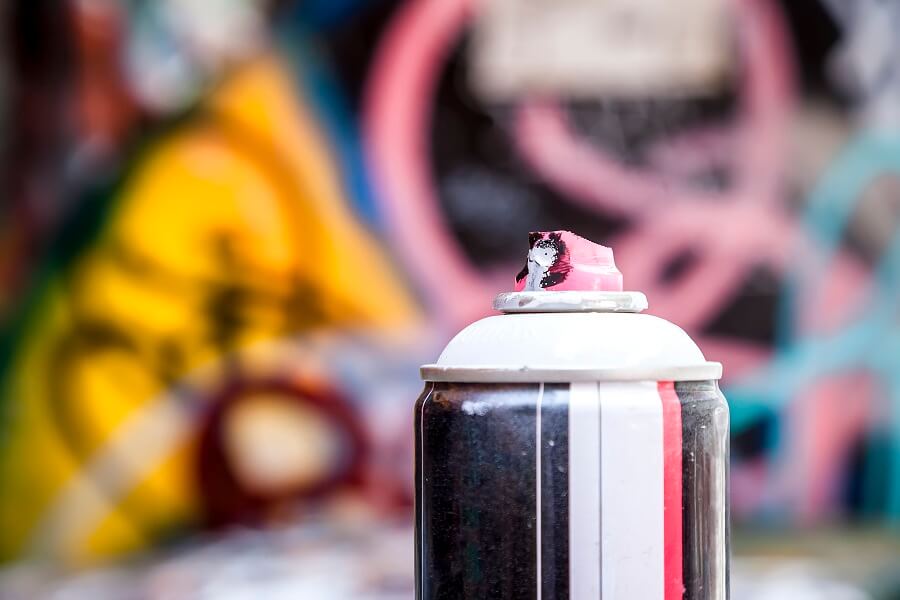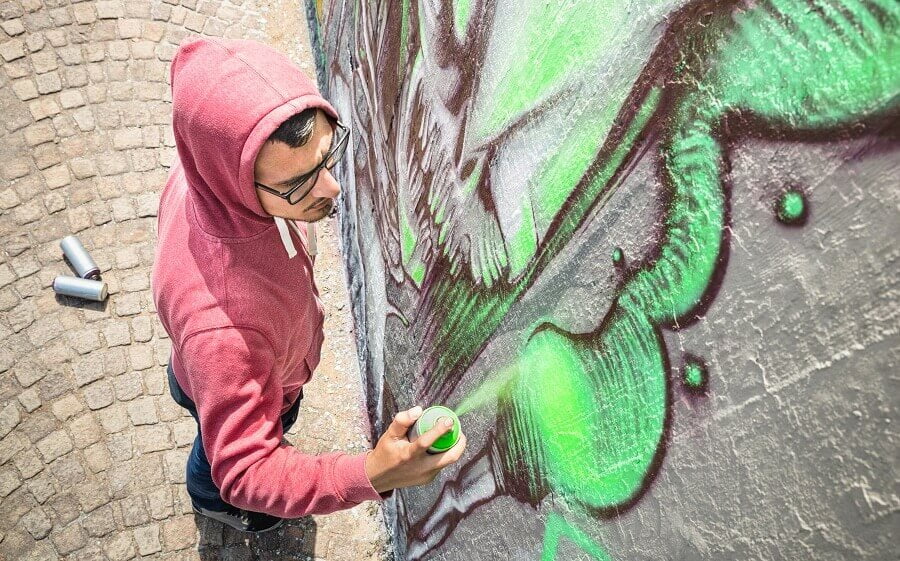
Understanding Graffiti Vandalism as a Crime in Australia
Graffiti, also known as tagging, is not always a piece of art as most people take it. According to Australian law, it can also be a form of vandalism and a crime that’s punishable by law. In fact, defacing property with graffiti is categorised as anti-social behaviour unless the property owner authorises it.
The rise of graffiti vandals across Australia has prompted authorities to legislate laws to curb the problem. This includes putting up harsh penalties for already painted graffiti and those intending to spray illegal graffiti. Today, being found in possession of graffiti implements is a crime in Australia.
Graffiti As A Crime
Graffiti as a crime is covered by the Graffiti Vandalism Act of 2016, which came into effect on 12 October 2016. The Act put graffiti as a crime and created new offences and penalties for graffiti damages, which were consolidated with previous graffiti offences.
Sections 5, 6 and 7 of the Graffiti Act stipulates when you can be charged with graffiti vandalism crime. This means you will need legal advice to put up a defence when charged. In section 5 of this Act, if you deface or damage another person property by graffiti without their consent, you have committed a crime.
In section 6, if you are in possession of graffiti implements, the law assumes that you intend to apply graffiti, and thus you have already committed a crime. You need to prove the contrary for the charges to be dropped. Otherwise, you will have to pay hefty fines. In section 7, you will be charged with graffiti crime if you are found selling graffiti implements to a child.
These are these three instances when you are deemed to have committed a graffiti offence. In each of the three cases, you will need to put up a defence to prove the contrary, or you will be found guilty as charged.

Graffiti Penalties
As described, there are three major scenarios when you are deemed to have committed a graffiti offence. All three instances attract different penalties, depending on the damages, age of the offender, and times one has been charged for the same crime.
If you are charged under section 5 of the Graffiti Vandalism Act of 2016 and found guilty, the maximum penalty is a $24,000 fine and a 2-year jail term. There is a minimum penalty, mostly for first-time offenders, which is a community-based order.
If found guilty under section 6 of the Graffiti Act, the penalty is $6,000. If you are guilty of selling graffiti implements to children (under section 7), the penalty is $6,000. But if it is a subsequent offence, the fine is doubled to $12,000, and sometimes the prosecutor may recommend a jail term.
If charged under the Graffiti Vandalism Act of 2016, the best thing you can do is seeking legal advice. With a criminal defence lawyer, you might get a favourable punishment. If you are 18 and below years and a first-time offender, your lawyer can bargain for a graffiti removal program, which is friendlier. If you are in need of a defence lawyer, our experienced team at Bouchier Khan Lawyers is ready to assist and advise you.
The Effects of Illegal Graffiti on our Community
Illegal graffiti, often associated with vandalism and property damage, poses significant challenges for communities worldwide. While street art can contribute to cultural expression and urban aesthetics, illegal graffiti carries detrimental consequences for the community.

Economic Impact
Illegal graffiti imposes substantial financial burdens on communities. The cost of removing and covering up graffiti can be significant, diverting resources that could otherwise be allocated to community development, public services, or crime prevention initiatives. Businesses and property owners often bear the financial burden of repairing defaced structures, leading to decreased property values and reduced attractiveness to potential investors.
Perception of Crime and Safety
The presence of illegal graffiti can create a perception of disorder and neglect, which can impact the overall sense of safety within a community. When graffiti is left unchecked, it can signal an environment conducive to criminal activity, discouraging residents and visitors from feeling secure in public spaces. This perceived lack of safety can hinder economic growth, tourism, and community cohesion.
Community Image and Pride
Illegal graffiti can tarnish the image of a community, affecting its reputation both locally and beyond. Graffiti-covered buildings, public spaces, and infrastructure can project a sense of neglect and abandonment, discouraging potential residents, visitors, and businesses from engaging with the community. This negative image can erode community pride, self-esteem, and cohesion, ultimately impeding social progress.
Social and Psychological Impact
The presence of illegal graffiti can have psychological consequences on community members. It may generate feelings of insecurity, powerlessness, and frustration among residents, leading to a decline in community engagement and social connectedness. The normalization of vandalism can create an environment where antisocial behavior is more likely to occur, fostering a cycle of disregard for public property and social norms.
Environmental Damage
Illegal graffiti often involves the use of toxic substances and aerosol paint, which can have detrimental effects on the environment. These materials can contribute to air pollution, contaminate water sources, and harm ecosystems. Moreover, the constant need for graffiti removal necessitates the use of harsh chemicals, further impacting the environment and contributing to ecological degradation.

Conclusion
Illegal graffiti negatively impacts communities in multifaceted ways, affecting the economy, perception of crime and safety, community image, social dynamics, and the environment. By understanding the damaging effects of illegal graffiti, communities can develop strategies to address this issue effectively. Promoting legal avenues for artistic expression, implementing proactive graffiti prevention programs, fostering community engagement, and encouraging dialogue between artists and community members are essential steps toward creating vibrant, safe, and thriving communities for all.
This article is of a general nature and is intended for information only. It should not be relied upon as legal advice. If you require further information, advice or assistance for your specific circumstance, please contact us at Bouchier Khan Lawyers.
